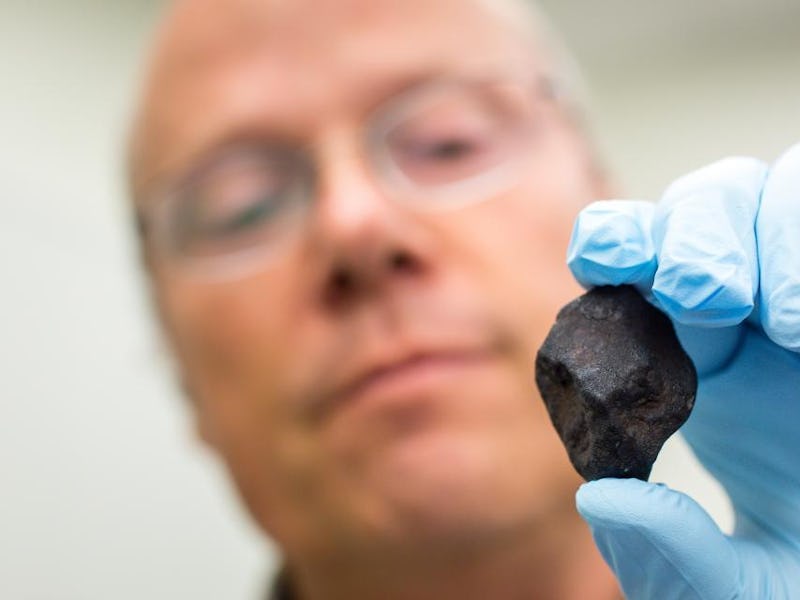Meteorite Hunters Find Fragments From Huge Arizona Fireball
They searched for 130 hours to get their space-rock fix.

Earlier this month, most of Arizona woke up to find that they had not, in fact, been obliterated by a gigantic meteor.
At approximately 4 a.m. on June 2, a large fireball-type meteor flared up and exploded over Arizona, brightening the sky over a huge amount of the state. Most of the time, fireballs are just flashy light shows that are nothing to worry about, but occasionally shrapnel and fragments make their way down to Earth. Provided they don’t hit anything important, a meteorite impact sets off a scavenger hunt for pieces of space rock over a huge area. In Arizona, most of the fragments fell in the White Mountains, which are largely owned and preserved by Arizona’s White Mountain Apache Tribe. Scholars from Arizona State University partnered up with the White Mountain Apache Tribe’s leadership to scour the mountainsides for pieces of space rock, and after 132 hours of searching, they managed to find some scraps of the celestial missile.
The pieces of meteor give researchers a “piece of that giant puzzle about where did we come from,” ASU Center for Meteorite Studies curator Laurence Garvie told the Associated Press.
The ASU team located 15 fragments of the meteor, which NASA says was a piece of a small asteroid that had broken apart.
“This thing exploded in the atmosphere,” Garvie told ASUNow. “When the stone breaks up, things just start dropping. … By simple physics we can estimate where these things are on the ground.” But the problem was, the meteor came down on Tribal land, which is closed to the public unless you have a permit for hiking or fishing. “People were excited, but it wasn’t on public land,” Garvie said.
Fortunately, the tribe was more than willing to help out in the search. Tribal chief ranger Chadwick Amos and Game and Fish director Josh Parker met up with Garvie and a couple of grad student to help with the rock-hunting.
Under their agreement, the White Mountain Apaches will retain their ownership of the meteorites, but ASU will study and curate them.
For private collectors, meteors can be quite valuable, but you’re not likely to get rich chasing space rocks. Their value can range from pennies to dollars per ounce, based on their material makeup, location, aesthetic beauty (they can often be polished or cut like gemstones), and historical significance. But in general, they’re more valuable to scientists studying extraterrestrial materials than they are as bartering tools — and they make for a pretty good show when they flame out in the atmosphere as well. David Adkins caught the smoke trail on camera as the sun rose over the state.
Like many fireballs, one of the best views of the blast was caught on an early-morning driver’s dashcam. Watch that below: